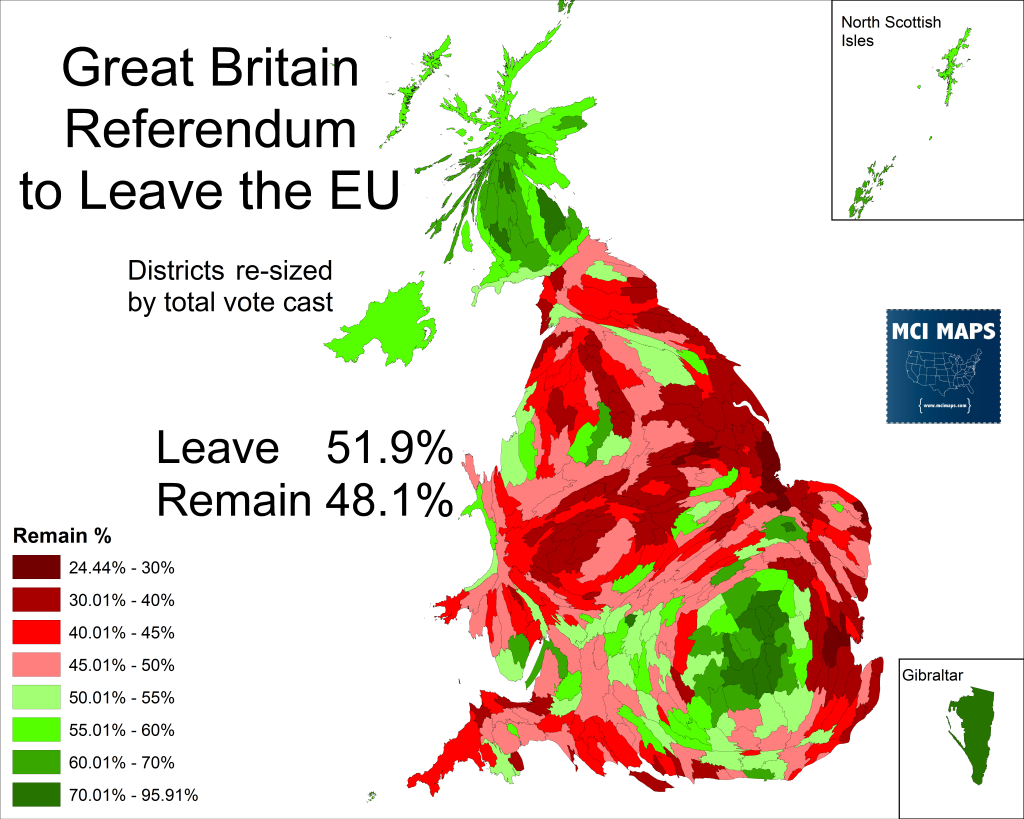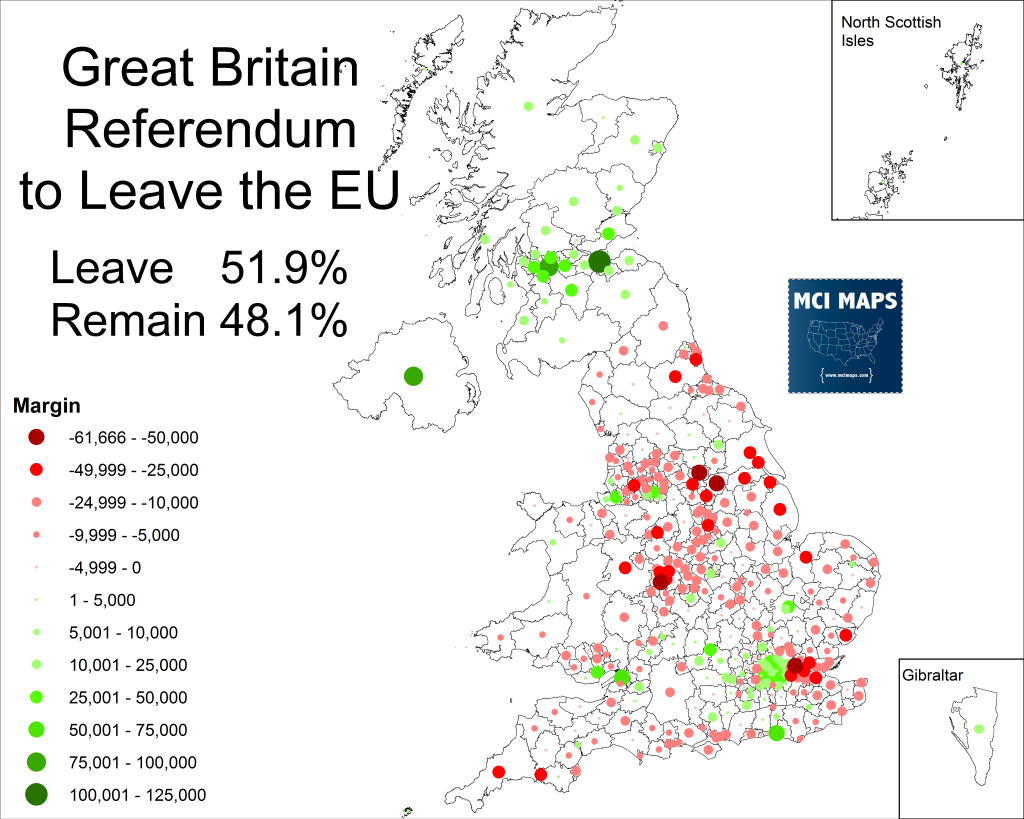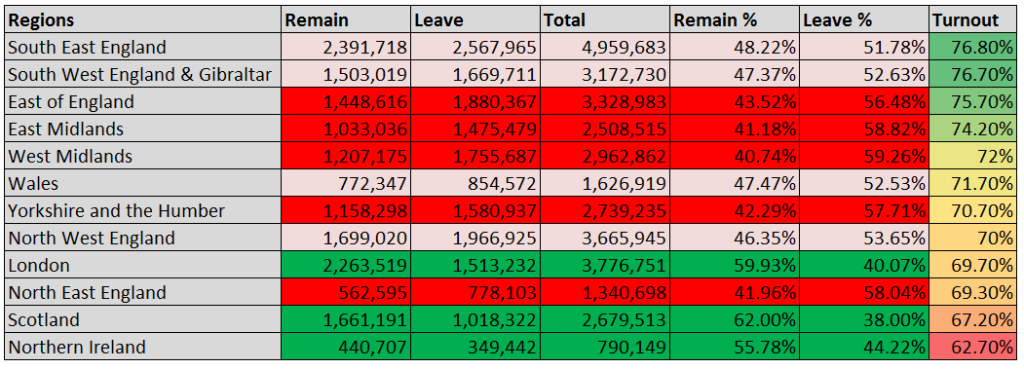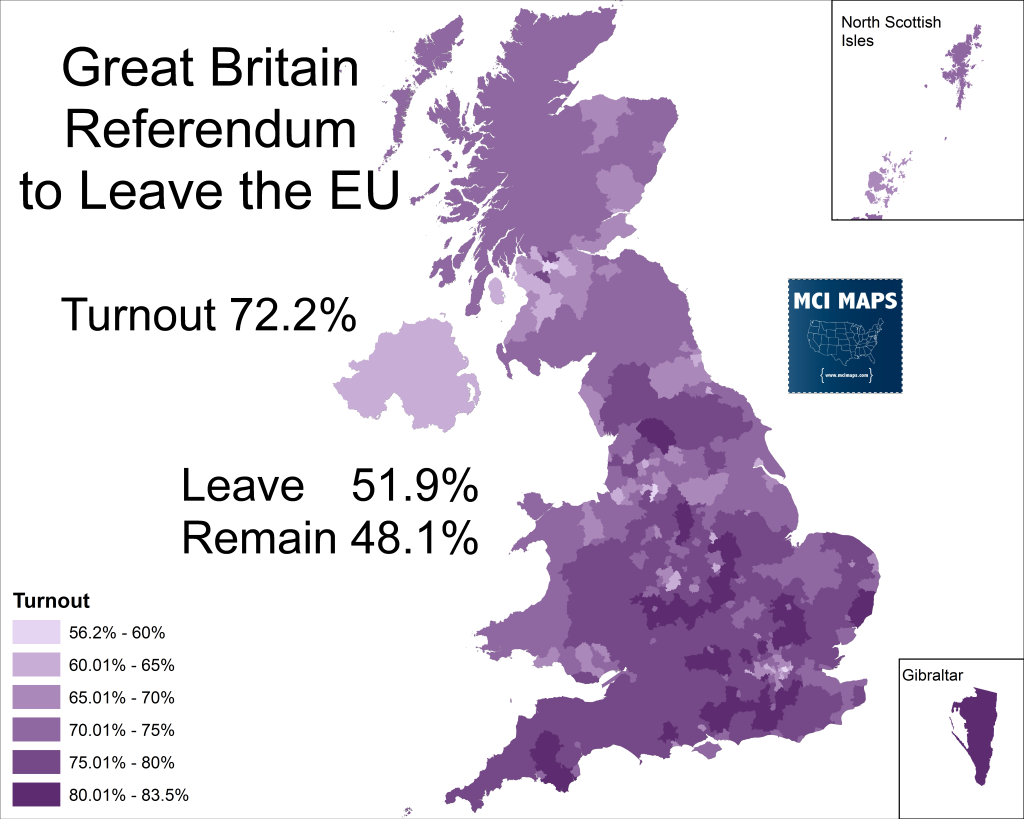Great Britain shocked the world by voting to exit the European Union last night. The effects of the Brexit, as its been dubbed, are already being felt and will continue to be felt for some time. The Pound is in free-fall and Prime Minister David Cameron, who opposed the effort to leave the EU, has announced he will soon step down. A good deal can be said about the backstory to referendum and the dynamics in play, but I will leave that to those who are experts in British politics. This article simply aims to give you some key maps and stats on the vote.
One great headache for Great Britain going forward is not just the uncharted waters the country finds itself in, but also the stark geographic divide in the vote to leave.
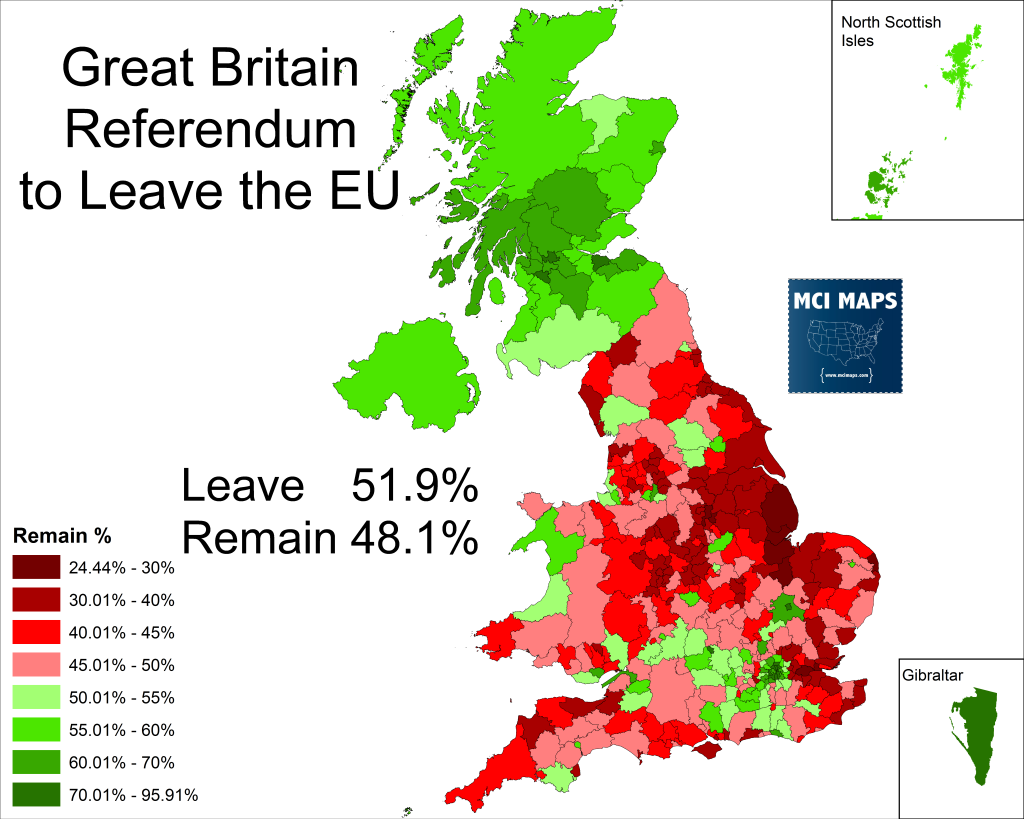
Scotland, as predicted, voted to remain in the EU with 62%, while England voted to Leave. This result was long expected and a cause for concern among officials who believe it could trigger another Scottish Independence Referendum. Within England itself, the vote was split between South and North England. The northern areas, a region with a large blue collar population that has seen job losses, similar to American’s rust belt, voted heavily to Leave. The southern region was more divided on the subject, and London voted to stay with 59%. Whales narrowly backed leaving, while Northern Ireland voted to stay.
That map only tells a partial story. Scotland looms large in the map due to its size and London looks small. The cartogram map below shows each voting district re-sized by the total votes cast to give a better idea of where the most/least votes came from.
London dominated the vote in the South, but was just surrounded by far to many pro-Leave districts.
This map shows the vote by the margin for the Remain side, with a negative margin meaning Leave won.
While Remain had London and Scotland, it still lost most district, and lost some of the largest.
A good deal has been said about turnout in the referendum. Indeed turnout was down in the areas most in favor of Remain, and higher in areas that backed Leave.
While the final margin was likely to large to be reversed by better turnout in London and Scotland, that turnout disparity no doubt hurt the Remain camp.
Mapping the turnout by district and you can see London stick out for its lighter turnout.
Great Britain has made its decision. The economic and political implication are yet to be fully realized. One thing is for sure, Britain is divided regionally and politically. How it can work through these divisions remains to be seen.


